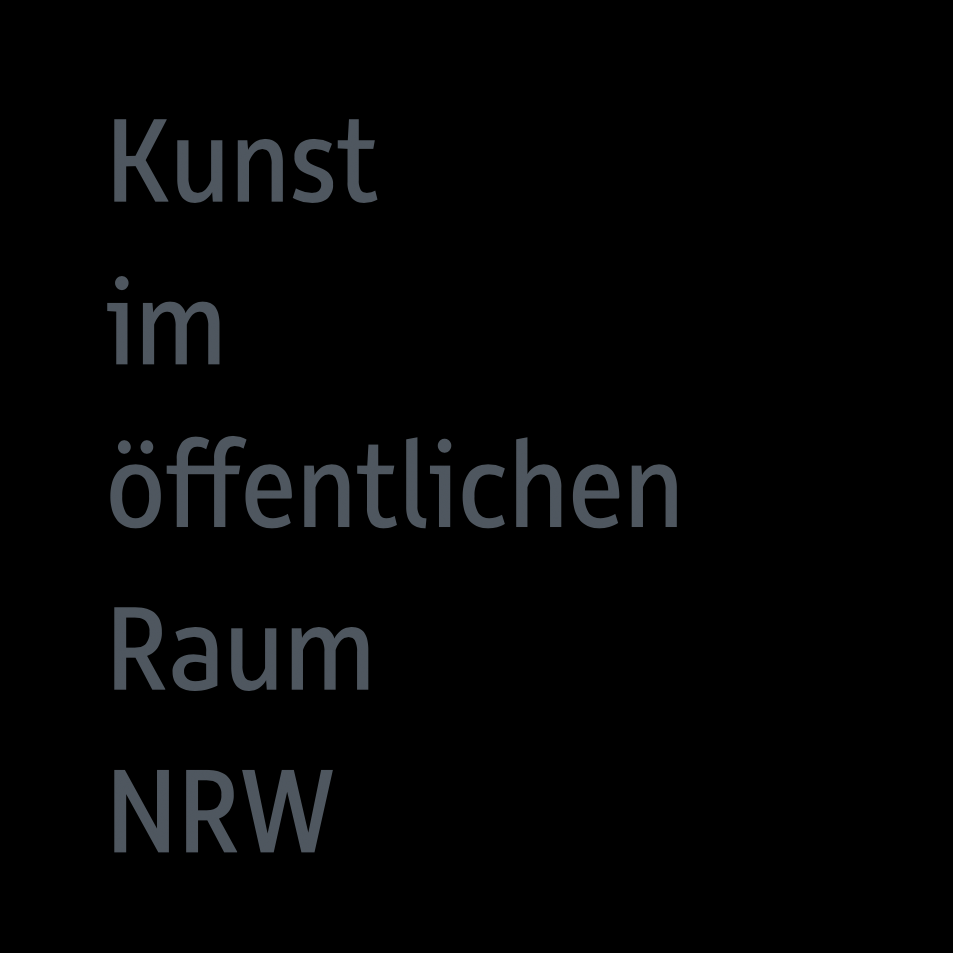Keil-Stück / Wedge
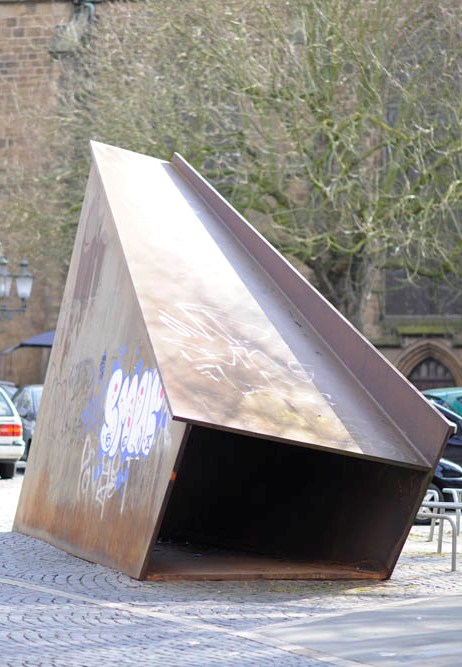
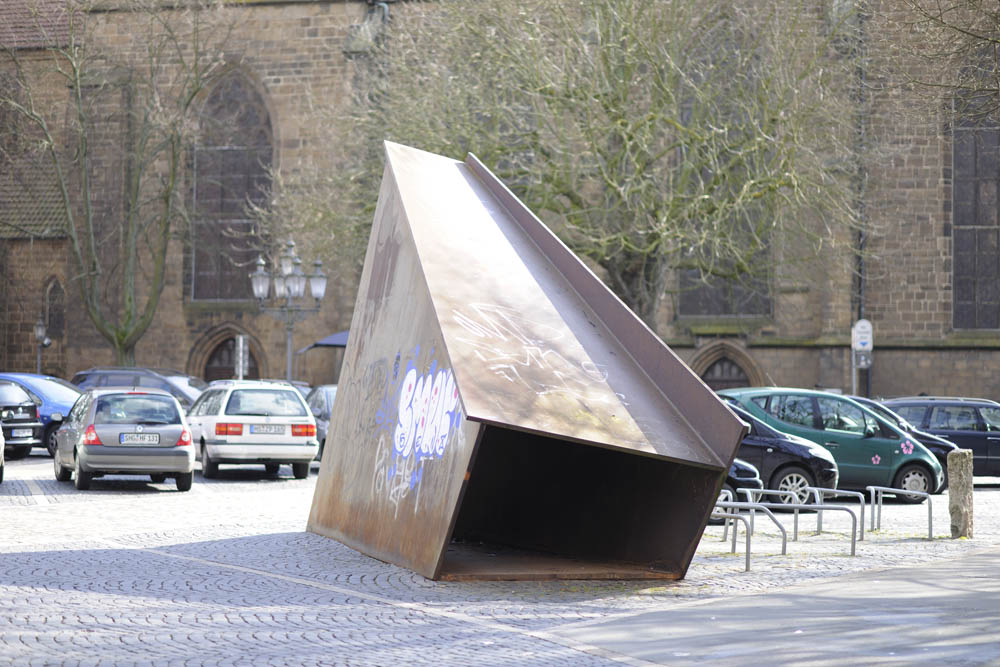

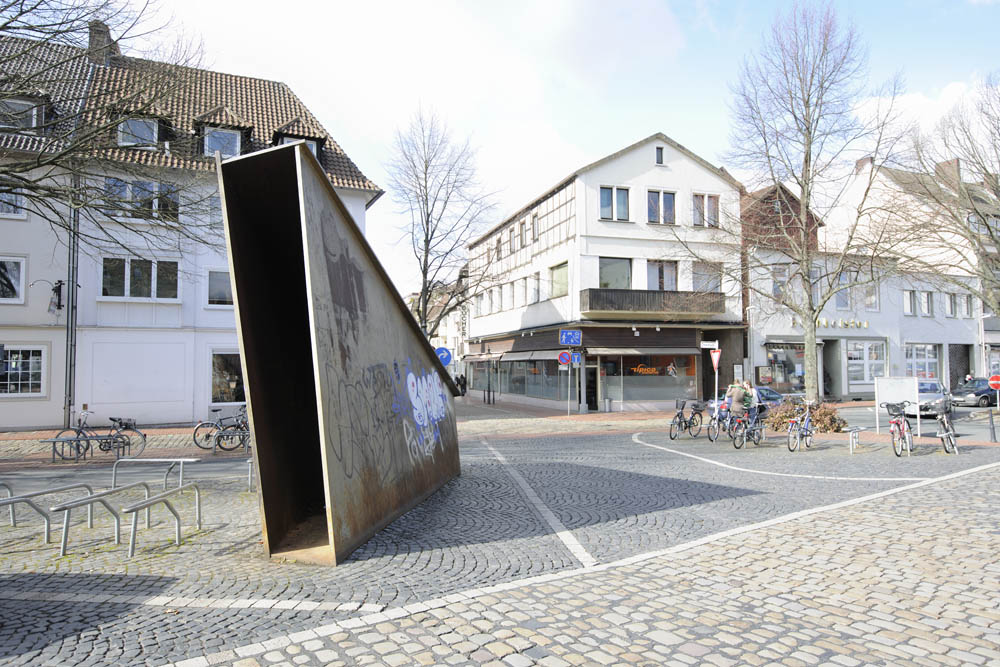
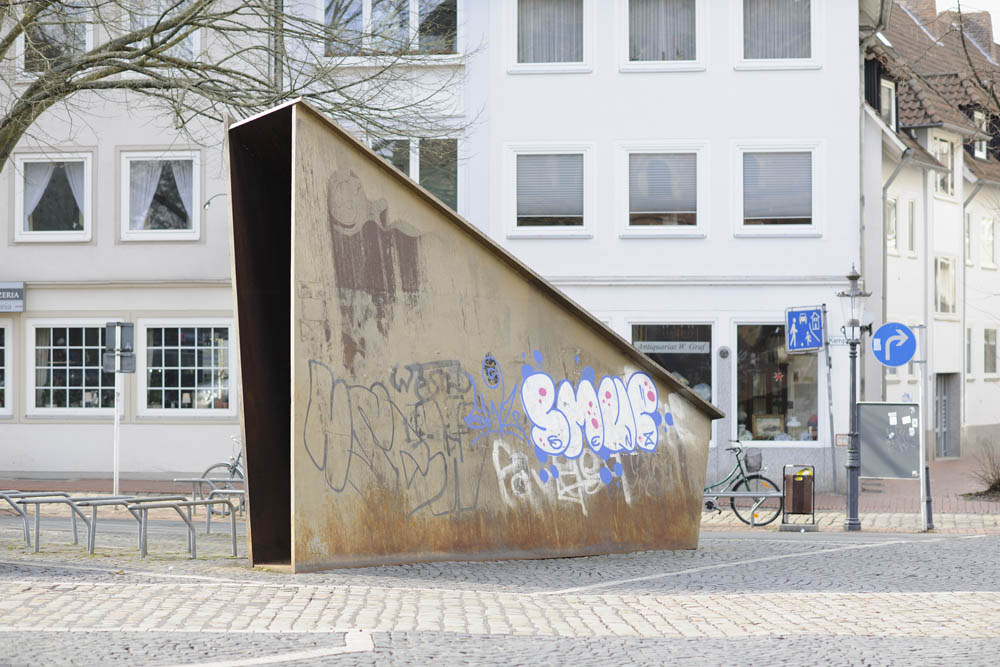
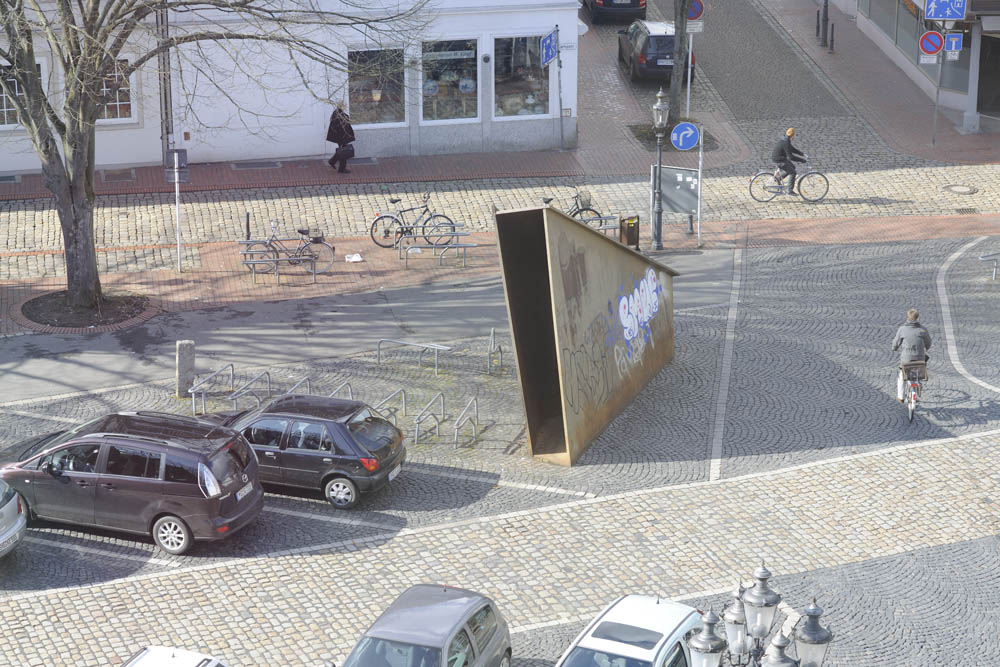
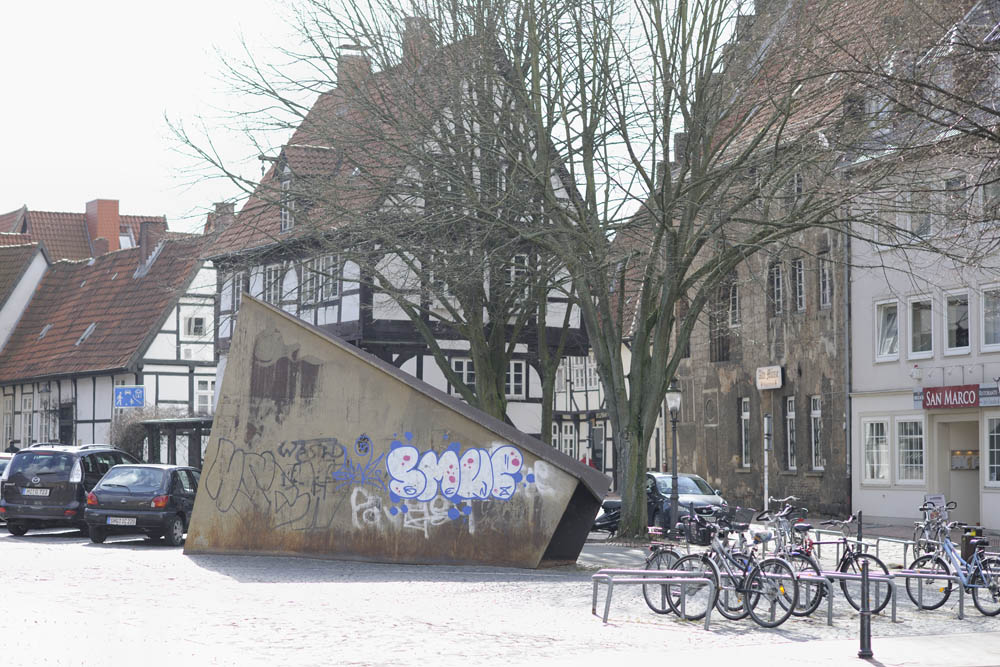
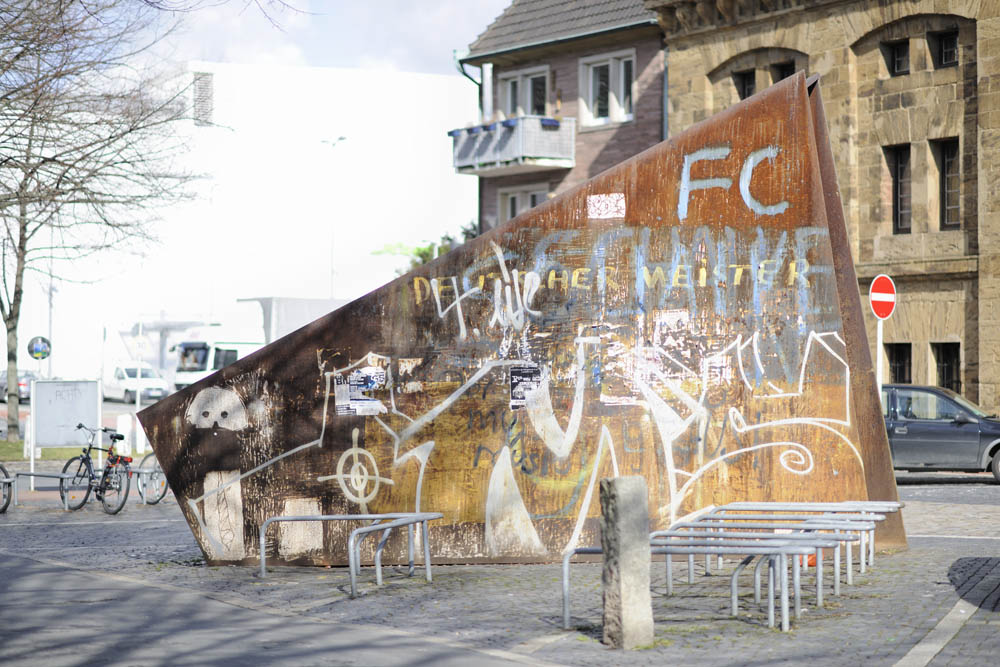
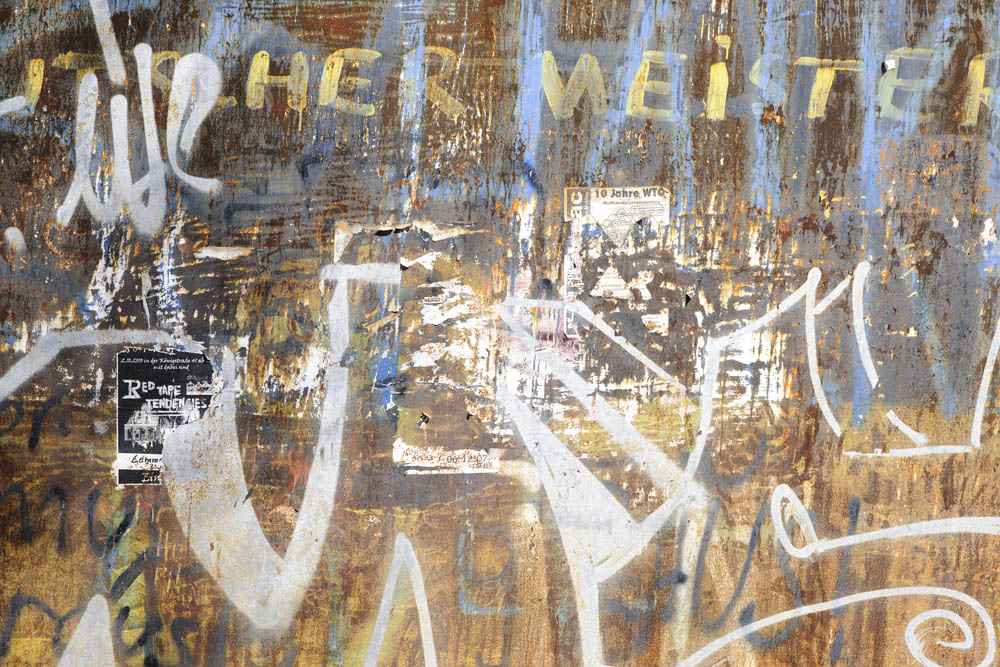
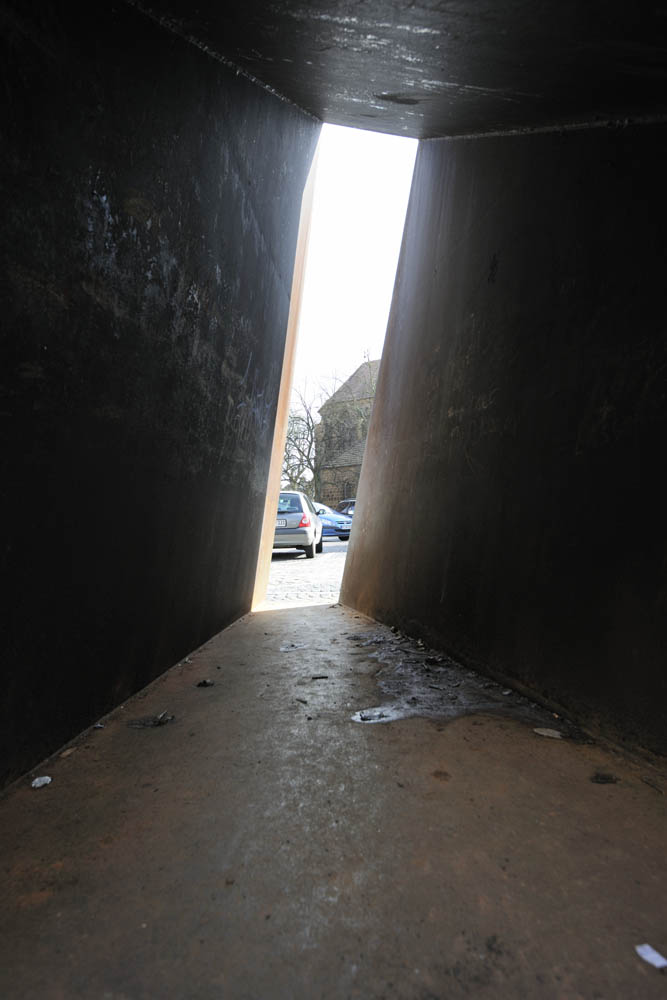
Wilfried Hagebölling’s Wedge in Minden is a massive, powerful, and dynamic sculpture that redefines its surroundings. Visitors can step inside of the 18-ton work, which is made up of welded steel plates that form a leaning wedge-like structure.
With its slanted roof pointing upward towards the choir of the Martinikirche, the work makes reference to its location by visually closing the churchyard. At the same time, it creates a completely new situation: the towering rusty steel walls of the massive wedge shape are impossible to miss, as the structure appears to be shifting in the direction of the church; furthermore, from inside the sculpture, viewers are offered an unusual sensory experience of themselves and their surroundings.
Likely due to its uncompromising form, the sculpture evoked massive reactions. There were initiatives to remove the work from its location and others in favor of its preservation. Private and public disputes turned into political and finally legal conflicts until the Hamm Oberlandesgericht ruled in 2001 that the Wedge would remain on the Martinikirchhof.
Wilfried Hagebölling
← Zur Startseite
Minden, Martinikirchhof (open space on the parking lot facing Kampstraße)
